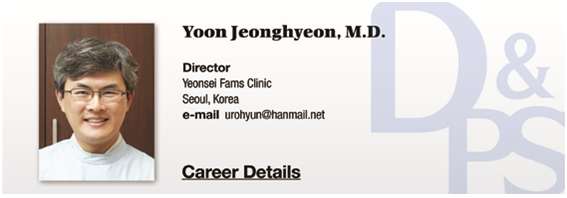
▶ Previous Artlcle :1-2-history-of-laser/
Fraxel: 1550nm wavelengths (Er:Glass), a laser for face rejuvenation, was first developed by Solta Medical in 2001 with the help of Dr. Cameron Rokhsar. After this, the 1927nm(Thulium)∙10600nm(CO2)∙2940 nm(Er:YAG) Fractional Laser was also developed.
In 2015, Cynosure developed the Picosecond Laser (Picosure) with 755nm wavelengths.
Briefly looking into the changes and developments in the area of laser introduced in Korea, 1) Q-switched Nd: YAG Laser was first used to remove tattoos, treat nevus of Ota, freckles and blemishes and its application was very limited. However, from early 2000s, carbon lotion was applied to skin and laser peeling and laser toning treatments started to be used, and Q-switched Nd:YAG Laser is now used for almost all patients. 2) The CO2 laser was used mainly for cutting to remove benign skin tumors in early stages. However, as the thermal damage to tissues was reduced thanks to the super-pulse mode and the ultra-pulse mode, the range of its use was expanded to include laser skin resurfacing. In the 2000s, the CO2 fractional laser was introduced and is used for face rejuvenation treatments, and for treating pores, scars, etc. 3) The Ruby laser was first used to remove tattoos, nevus of Ota, ABNOM, freckles and dark spots, but thanks to the development of the Ruby toning mode and the fractional mode, the therapy range has been expanded to include whitening and melasma. 4) The Er. YAG laser was used for treating a variety of lesions of benign tumors, such as age spots, moles and lentigo, and for laser peeling. In addition to this, treatments for the purpose of face rejuvenation by light superficial peeling, such as lunch peel, were created through changes in parameters (spot size, fluence, etc.) The newly added micro lens array fractional handpiece is often used to treat hypertrophic scars, atrophic scars, and pores and dramatically reduces downtime and complications in comparison to the full-face laser peeling. 5) The Alexandrite laser was developed in 1980 but it was first used mainly for hair removal and its applications were expanded to removing blemishes and to whitening. Thanks to the addition of the fractional handpiece, the Alexandrite laser has become more useful in treating freckles. 6) In 2015, after the manufacturing of the picosecond 755 nm laser, the picosecond 1064 nm laser was introduced by several companies around the same time. It has shown better clinical results than the nanosecond laser in the treatment of a variety of pigmentation problems, such as freckles, blemishes and tattoo removal. Even now, the picosecond lasers are continuously being upgraded to reduce the pulse duration and to improve the outputs to be not just ‘near picosecond lasers’ but to become ‘real picosecond lasers’.
.jpg)
[Advertisement] FCR® (Fractional Prickle CoralCalcium Regentron) – Manufacturer: (www.illglobal.com)]
There are even more lasers in use apart from the ones mentioned here, and most of them are held and used by cosmetic surgeons who run skin care and anti-aging clinics. Here, I have summarized the history of the medical lasers most commonly used by cosmetic surgeons. The time table below shows the history of lasers cited from the references.
In the next issue, we will start with laser basics and move little by little further into the topic.
- To be continued



















